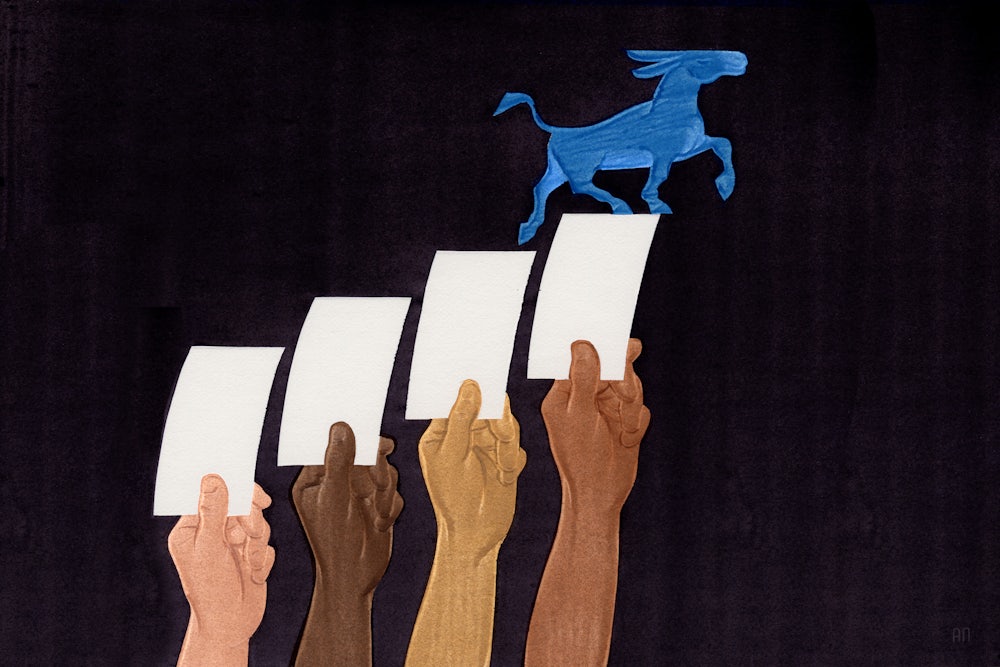
Redoing the Electoral Math
I argued that demographics favored the Democrats. I was wrong.
If any force on Earth could be powerful enough to unite the Democratic Party, you’d have thought the words “President Donald Trump” would do the trick. Instead, Hillary Clinton’s defeat last November only served to intensify the split within the party. Nine months in, two warring camps continue to offer seemingly irreconcilable versions of what went awry and how to fix it. On one side, populists like Bernie Sanders and Rust Belt Democrats like Representative Tim Ryan of Ohio argue that the party lost by neglecting working-class voters while catering primarily to “identity politics.” On the other side, an equally vocal contingent makes the opposite case: that the Democrats will blow it in 2018 and 2020 if they take voters of color for granted and focus their energy on wooing the white voters who backed Trump.
Steve Phillips of the Center for American Progress, a leading proponent of the latter view, argues that the Democrats doomed themselves in 2016 with “a strategic error: prioritizing the pursuit of wavering whites over investing in and inspiring African American voters.” In the wake of the election, Phillips wrote in The Nation that “the single greatest force shaping American politics today is the demographic revolution that is transforming the racial composition of the U.S. population.”
Taken together, Phillips writes in his book, Brown Is the New White, “progressive people of color” already combine with “progressive whites” to make up 51 percent of voting-age Americans. “And that majority,” he adds, “is getting bigger every single day.” The strategy prescription logically follows. Rejecting the notion that Democrats must woo Trump voters as a “fool’s errand,” Phillips says the party must be “race-conscious and not race-neutral or color-blind.” Demographics are destiny. “The concerns of people of color,” he concludes, “should be driving politics today and into the future.”
This isn’t a new argument, of course—and I bear some responsibility for it. The book I co-wrote in 2002 with demographer Ruy Teixeira, The Emerging Democratic Majority, laid out an overly optimistic forecast of the party’s prospects in an increasingly diverse America. By and large, Teixeira still holds to the view that the growth of minority populations will provide a long-term “boost to the left.” In his new book, fittingly titled The Optimistic Leftist, Teixeira notes that by the 2050s, eleven of the 15 largest states will be “majority-minority.”
The U.S. census makes a critical assumption that undermines its predictions of a majority-nonwhite country. It projects that the same percentage of people who currently identify themselves as “Latino” or “Asian” will continue to claim those identities in future generations. In reality, that’s highly unlikely. History shows that as ethnic groups assimilate into American culture, they increasingly identify themselves as “white.”
